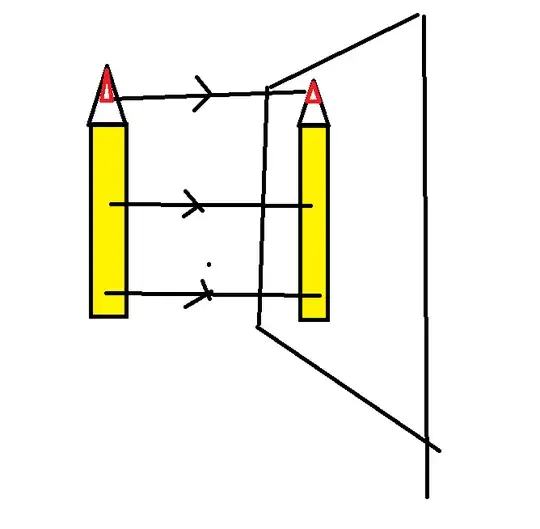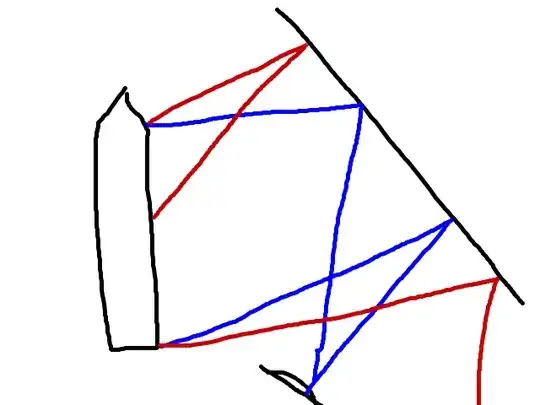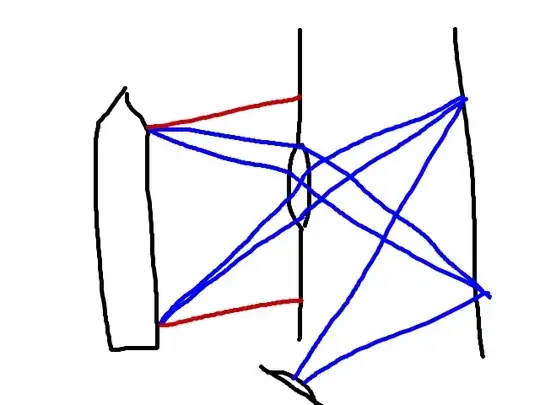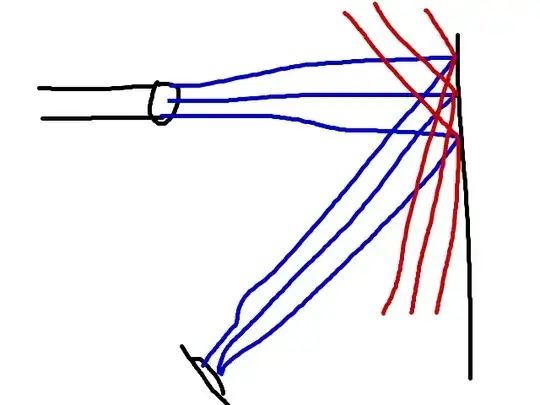Because the real situation looks a lot more like this:
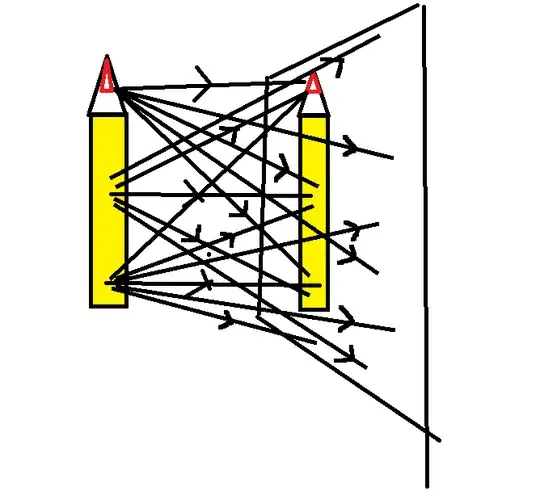
Your pen is (presumably) not made of mirror-like polished metal, but rather of something like wood or plastic that reflects light diffusely. This means that the light from each part of the pen is scattered all over the paper (and, of course, in other directions too), so it won't project a clear image onto the paper.
(And since the paper itself is also a diffuse reflector, all the light that hits it gets scattered in all directions again, and some of it ends up hitting your eye. If you replaced the paper with a mirror, then only those rays that were coming from just the right direction would have a chance of getting reflected towards your eye, and so you'd see a sharp reflected image.)
OK, so why won't the pen at least form a blurred image on the paper, then? Well, actually it does.
Here's a photo I just took with my cellphone. Sorry that it's a bit dark, I wanted to make sure I didn't burn out any highlights.
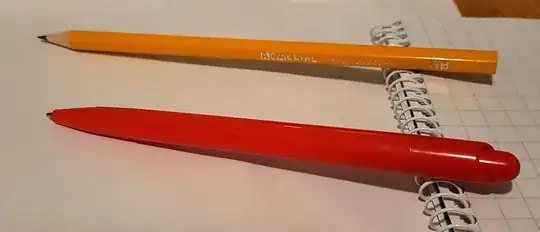
If you look closely and carefully, you can see just the slightest hint of yellowish color on the paper near the pencil, and a hint of red near the pen. Those faint colors are caused by light reflecting off the pen and the pencil onto the paper. But they're not very bright, because most of the light hitting the paper is still coming from other directions (primarily, from the lamp illuminating the scene), and not very distinct, because the light that does reflect off the pen and the pencil gets spread in all directions.
Just in case you can't see it clearly on your screen, here's the same photo with the color levels adjusted for maximum contrast:
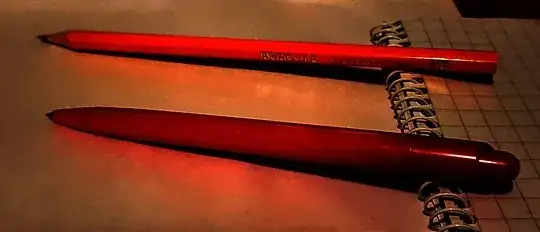
There, I bet you can see it now. It almost looks as if the pen and the pencil were glowing... which, of course, technically they are. Not with their own light, of course, but with light reflected from the lamp that illuminates them, just like e.g. the moon glows with reflected sunlight.
As a bonus, if you look carefully, you can also see some brighter spots on the paper near the pencil. Those are specular reflections from the glossy print on the pencil. So we actually have both diffuse and specular reflection demonstrated in the same picture.
